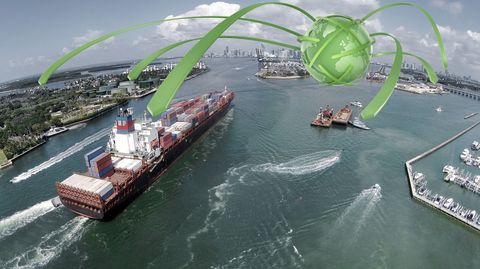As part of its ongoing commitment to championing liberalized trade on a global basis, the European Union has been making efforts to negotiate new free trade agreements (FTAs) with a number of regions. However, it is also important to acknowledge the work the bloc is doing to update its older FTAs, in order to make them fit for purpose in the modern era.
One of the best examples of the latter effort is the work the EU is currently devoting towards putting in place a revised trade deal with Mexico, an increasingly important commercial partner, to replace an existing agreement that has been in force since 2000.
Talks pertaining to the new deal are progressing well, and both the EU and Mexico are hopeful that a revamped FTA can further strengthen the economic ties between the regions and deliver mutual benefits.
The background
At present, trade between the EU and Mexico is carried out under the terms of an FTA adapted from the earlier Global Agreement, which was put into force in 1997 before being developed into the current FTA three years later.
Since this deal took effect, trade volumes between the EU and Mexico have tripled, with the EU ranking as Mexico's third-largest trading partner after the US and China, while Mexico stands as the EU's second-biggest export market after the US. Key EU exports to Mexico include machinery, transport equipment, chemicals, fuels and mining products, with a similar bill of goods - plus office and telecommunication equipment - moving the other way.
As beneficial as this deal has been, however, it is widely recognized that the trading environment has changed significantly since it was signed, with the EU having added 13 additional members and launched a new currency, while Mexico has become one of the world's most dynamic emerging economies. A new FTA that reflects these realities is therefore being sought.
Key objectives of a new deal
The broad aims of the revised deal will be to further simplify administrative burdens and minimize any red tape that currently hampers EU-Mexico trade. It will also be intended to boost growth and competitiveness, broaden consumer choice and create jobs in both regions.
Specific key objectives include improving market access in fields such as agriculture, trade in services and investment, while also addressing technical barriers to trade and achieving a more unified approach to sanitary and phytosanitary measures and intellectual property rights. Issues pertaining to public procurement, trade facilitation, competition and sustainable development will also come under scrutiny.
It is expected that such a deal would result in increases in GDP, welfare and exports, employment, wages and competitiveness for both regions, while also enhancing competitiveness and delivering a higher standard of environmental performance. Perhaps just as crucially, it would underline the EU and Mexico's ongoing commitment to the principles of globalization and free trade, at a time when populist movements are pushing back against the progress made on these fronts in recent years.
EU commissioner for trade Cecilia Malmstrom said: "We will be able to boost growth, making our firms more competitive and widening choices for consumers while creating jobs.
"Together, we are witnessing the worrying rise of protectionism around the world. Side by side, as like-minded partners, we must now stand up for the idea of global, open cooperation."
What happens next?
With strong political will supporting the deal, both the EU and Mexico are keen to secure a final agreement as soon as possible, and have taken steps in recent weeks to accelerate the progress of the negotiations.
Having launched the talks in May 2016, three rounds of negotiation have taken place, with the most recent coming in April 2017 in Brussels, during which a number of key topics were discussed, including trade in goods and services, investment, technical barriers to trade, competition rules, trade defense instruments, resolution of state-to-state disputes, transparency and sustainable development.
A fourth round will take place from June 26th to 30th in Mexico, with negotiators due to meet every month during the second half of the year as the pace of the process quickens. The ambition on both sides is to agree upon a deal before the end of the year.






